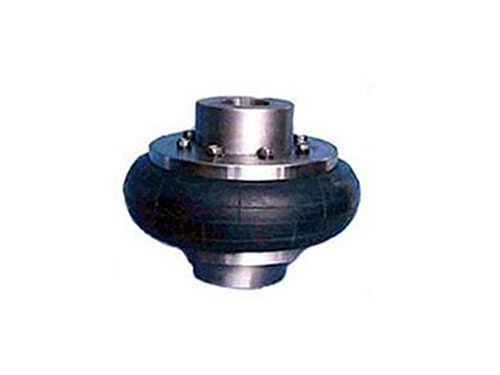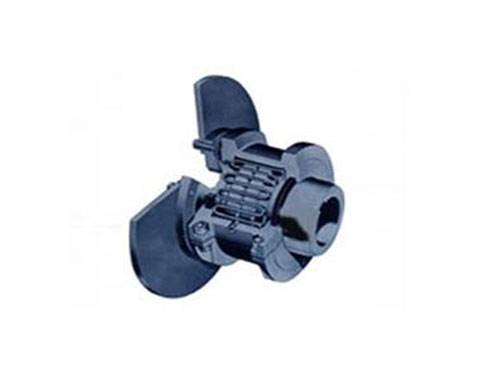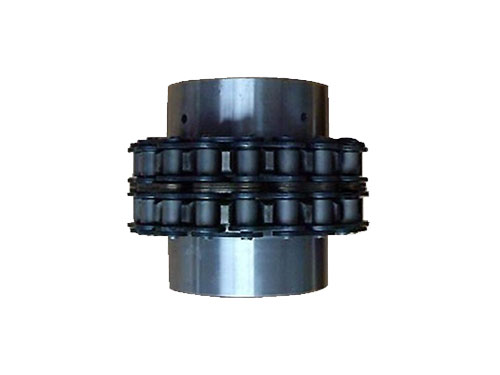 Tire coupling for LLB metallurgical equipmentTire coupling for LLB metallurgical equipment belongs to...
Tire coupling for LLB metallurgical equipmentTire coupling for LLB metallurgical equipment belongs to... JQ type clamp couplingThe characteristics of the JQ type clamp coupling and the clamp...
JQ type clamp couplingThe characteristics of the JQ type clamp coupling and the clamp... JSP type coupling with brake discJSP type couplings with brake discs generally should...
JSP type coupling with brake discJSP type couplings with brake discs generally should... GLF roller chain couplingGLF roller chain coupling is suitable for hydraulic machinery...
GLF roller chain couplingGLF roller chain coupling is suitable for hydraulic machinery... Three-jaw coupling for pumpThe three-jaw coupling for pumps uses a number of non...
Three-jaw coupling for pumpThe three-jaw coupling for pumps uses a number of non...Precautions for the processing of diaphragm couplings and the stress on the diaphragm of the stainless steel coupling
Briefly describe the matters needing attention in the processing of diaphragm couplings:
XNUMX. The whole machine has fewer parts, small size and light weight. The spring leaf designed as a trapezoidal cross-section and the trapezoidal tooth groove are particularly convenient and close, so that the assembly, disassembly and maintenance are simpler than ordinary couplings.
XNUMX. The transmission speed of the diaphragm coupling, its short-term overload capacity is twice the rated torque, and it runs.
XNUMX. The aluminum alloy casing protects the spring from being thrown out during operation, and the casing is filled with butter, which not only makes the lubrication good, but also makes the noise of the reed meshing be absorbed and removed by the butter damping.
XNUMX. Because the spring leaf and the tooth arc surface are in point contact, the coupling can obtain greater flexibility.It can be installed to work normally under conditions of radial, angular and axial deviations at the same time.
The diaphragm coupling is an all-metal dry flexible coupling.It realizes the flexible transmission of the coupling through the elastic deformation of the thin alloy steel sheet, so that the coupling can not only absorb the misalignment of the transmission shafts on both sides and absorb the impact, but also can be used in other couplings containing non-metallic components. It is difficult to withstand the high temperature and harsh conditions of the device, and it can obtain long service life and good mechanical properties.Its structure is also simple, easy to load and unload, low cost, and no need for lubrication and maintenance.These advantages of diaphragm coupling make it widely used in aviation, shipbuilding, petrochemical industry, machinery manufacturing and other fields.The structure of the diaphragm coupling is mainly composed of a metal diaphragm group (diaphragm), a half coupling, an intermediate section, a compression element, a bolt, a locknut, a washer, etc.Its working principle is: the torque is input from the half coupling of the active end, and the torque is transmitted to the diaphragm group through the main torsion bolts arranged at intervals along the circumference, and then transmitted from the diaphragm group to the middle section through the bolts, and is also transmitted by the diaphragm group through the bolts. The diaphragm set, bolts and driven end half coupling output at the other end.The metal diaphragm is a key component of the flexible coupling. It is composed of a number of thin metal diaphragms laminated to form a diaphragm group, through which torque and movement are transmitted.The thickness of the diaphragm is generally 0.2mm~0.6mm. The shape of the diaphragm mainly includes the ring type, the spoke type, the connecting rod type, the polygon type and the waist type.The study on the calculation of the stress and torsional stiffness of the diaphragm of the diaphragm coupling is helpful for in-depth and accurate analysis of the torsional vibration of the shafting, and provides determination for the operation of the marine power plant.The diaphragm is the key element of the diaphragm coupling. Since the stiffness of other parts in the coupling is much greater than that of the diaphragm, the stiffness of the diaphragm can be regarded as the stiffness of the coupling.Due to the axial deviation of the coupling, the transmission of torque, and the bearing of centrifugal force, the diaphragm is in a complex state of stress during operation.
The characteristic of the stainless steel coupling diaphragm is a bit like a bellows coupling. In fact, the way the coupling transmits torque is similar.The diaphragm itself is very thin, so it is easy to bend when the relative displacement load is generated, so it can withstand up to 1.5 degrees of deviation, while generating a lower bearing load in the servo system.Diaphragm couplings are often used in servo systems. Diaphragms have good torque rigidity, but are slightly inferior to bellows couplings.On the other hand, the diaphragm coupling is particularly delicate and can be easily damaged if it is misused or improperly installed during use.Therefore, it is particularly necessary to determine that the deviation is within the tolerance range of the normal operation of the coupling.
Before installing the diaphragm of the stainless steel coupling diaphragm, clean the end faces of the two shafts and check the fit of the key grooves on the end faces. After installation, run a shift normally and check all the screws. If loose, tighten it immediately. Repeat several shifts. To ensure that it will not be loosened; take appropriate protective measures at various sites that may be caused by the operating diaphragm stainless steel coupling diaphragm and equipment accidents.In order to prevent the fretting of the diaphragm during high-speed operation, causing microcracks and damage to the bolt holes of the diaphragm, a solid lubricant such as molybdenum disulfide can be applied between the diaphragms or the surface of the diaphragm can be treated with a wear-reducing coating ; The diaphragm coupling compensates for the relative displacement of the two shafts connected by the elastic deformation of the diaphragm. It is a high-performance flexible coupling with metal elastic elements. It does not require lubrication, has a compact structure, and has a long service life. The rotating gap is not affected by temperature and oil pollution, and has the characteristics of acid and alkali resistance.
The stainless steel coupling diaphragm mainly bears the stress:
XNUMX. Bending stress caused by axial installation error.Due to the actual installation error in the axial direction, the diaphragm will be bent and deformed in the axial direction.The displacement is loaded in the axial direction of the middle bolt hole, and the radial displacement and the axial displacement are fixed.
XNUMX. Bending stress caused by angular installation error (periodical profit).Due to the actual installation error in the axial angular direction, the diaphragm is periodically deformed along the axial direction, and it is the main factor that determines the fatigue life of the diaphragm.
4. Film stress caused by torque.The force generated by the torque on one side is evenly distributed on the four spaced bolt holes. On all 1/4 diaphragms, the force acts on the middle of one side of the middle bolt hole in the circumferential direction to fix the radial displacement and the axial direction. Displacement.
2. Centrifugal stress produced by centrifugal inertial force.High-speed mechanical centrifugal inertial force is important in the stress calculation of the structure. Its centrifugal inertial force can be loaded according to the radial unit body force f=2rρ(60πn/XNUMX), and the direction is radially outward. In the formula, n is the speed and r is The radius, ρ is the density.Fix the radial displacement, circumferential displacement and axial displacement of the middle bolt hole, without other surrounding loads.